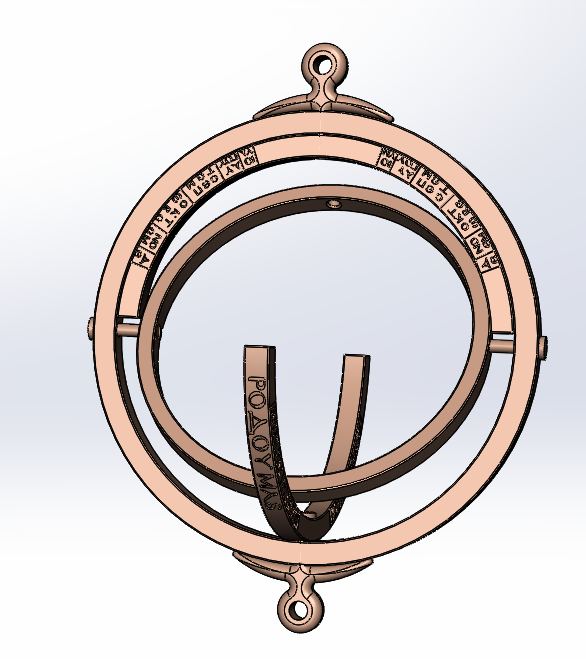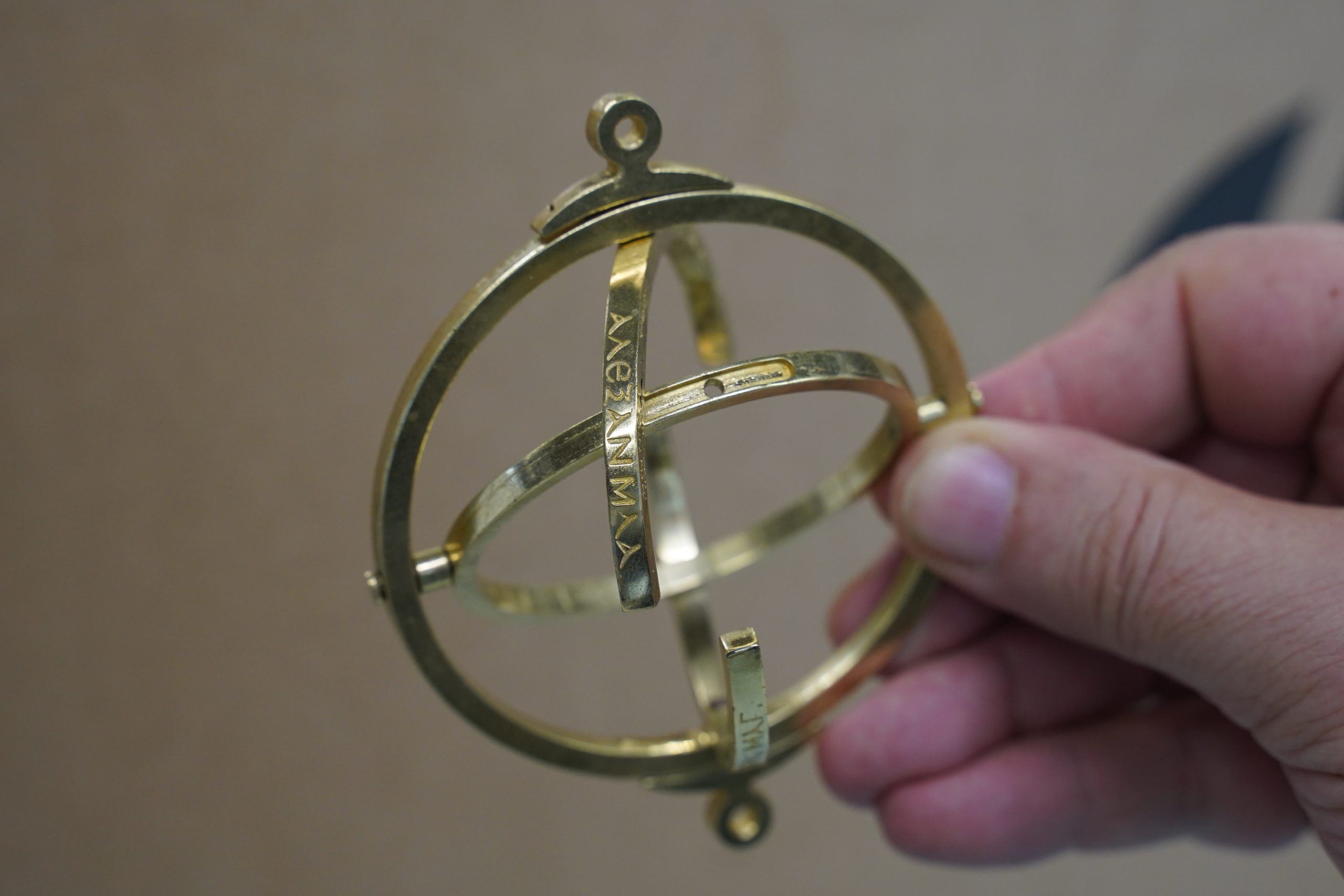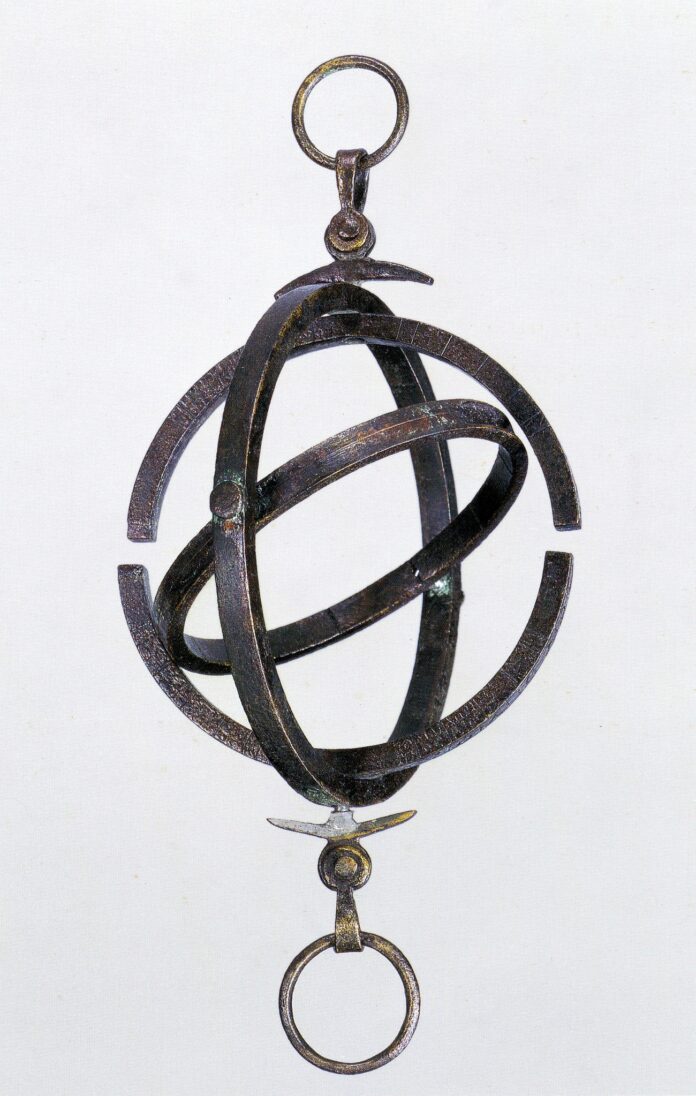In the heart of Macedonia, where history and archaeology intertwine, lies a hidden gem within the Archaeological Museum of Philippi: a portable sundial that takes us on a journey through time. Dating back to the period between 250 and 350 AD, this remarkable artifact offers a glimpse into the ancient world’s fascination with measuring time, latitude, and the celestial heavens.
This portable sundial is unlike any other timekeeping device of its era. Comprising three interconnected flattened rings, it bears a striking resemblance to a spherical astrolabe. The beauty of this design lies in its versatility. Each of the three rings can be independently rotated a full 360 degrees, allowing for precise time measurements and astronomical observations.
The Portable Sundial’s Unique Design

In the heart of Macedonia, where history and archaeology intertwine, lies a hidden gem within the Archaeological Museum of Philippi: a portable sundial that takes us on a journey through time. Dating back to the period between 250 and 350 AD, this remarkable artifact offers a glimpse into the ancient world’s fascination with measuring time, latitude, and the celestial heavens.
This portable sundial is unlike any other timekeeping device of its era. Comprising three interconnected flattened rings, it bears a striking resemblance to a spherical astrolabe. The beauty of this design lies in its versatility. Each of the three rings can be independently rotated a full 360 degrees, allowing for precise time measurements and astronomical observations.
On the outer curved side of the central ring, the names and latitudes of various cities are meticulously engraved in two half-rings. From Rome (ΡωΜΗC) to Alexandria (ΑΛΕΞΑΝΔΡΕΙΑC) and from Athens (ΑΘΗΝΑΙ) to Rhodes (ΡΟΔΟΥ), these inscriptions serve as geographical markers, facilitating latitude calculations.

Further enhancing its functionality, the sundial features month names engraved on both sides of the ring’s thickness. These month inscriptions correspond to each city, with one side displaying January to June and the other July to December. This ingenious design allowed users to account for variations in daylight hours throughout the year, enabling more accurate timekeeping.
The innermost ring, found on the outer curved surface, contains a central optometric hole. This feature played a crucial role in determining the azimuth and altitude of celestial bodies, particularly the sun and stars. The inner domed side of this ring is divided into 12 sections by intricate engravings, enabling users to measure time with remarkable precision.
The Multifaceted Utility
This portable sundial is truly a marvel of ancient engineering. Its multifaceted utility is a testament to the ingenuity of the Hellenistic tradition. Beyond its primary function as a timekeeping device, this remarkable artifact offered a wide array of features that showcased the sophistication of Hellenistic scientific knowledge and instrumentation.
One of the sundial’s most impressive capabilities was its ability to determine approximate latitude. The carefully engraved markings around the central ring, indicating the names and latitudes of various cities, allowed users to reference their location and make calculations to ascertain their latitude. This was a crucial function for navigation, cartography, and astronomical observations.

In addition to time measurement and latitude determination, the sundial also facilitated the charting of the sun’s path and the positions of other celestial bodies. The central optometric hole and the intricate engravings on the innermost ring enabled users to track the azimuth and altitude of the sun, moon, and stars. This information was invaluable for a range of applications, from maritime navigation to the study of celestial mechanics.
Furthermore, the sundial’s design allowed for precise astronomical calculations that were essential for a variety of fields, including calendar-making, the prediction of solar and lunar eclipses, and the timing of religious and agricultural rituals. The versatility of this instrument truly speaks to the depth of Hellenistic scientific knowledge and the ingenious ways in which it was applied to practical problems.
The Influence of Hellenistic Tradition

The roots of this portable sundial can be traced back to the Hellenistic tradition, a period marked by remarkable scientific and cultural achievements. However, it’s important to note that the Byzantines, who succeeded the Hellenistic era, continued to cultivate these innovations under the influence of both Christianity and the Roman world. This blending of knowledge and ideas from different civilizations contributed to the refinement and development of devices like the portable sundial.
Let us embark on a historical voyage to discover the secrets of this ingenious invention and its significance within the context of Hellenistic traditions. The portable sundial found in the Archaeological Museum of Philippi stands as a testament to the ingenuity and scientific prowess of the ancient world, a timeless masterpiece that continues to captivate and inspire us in the modern era.
